Resilience Within the Rubble
Reconstructing the Kasthamandap and Kathmandu’s past after the 2015 Gorkha Earthquake
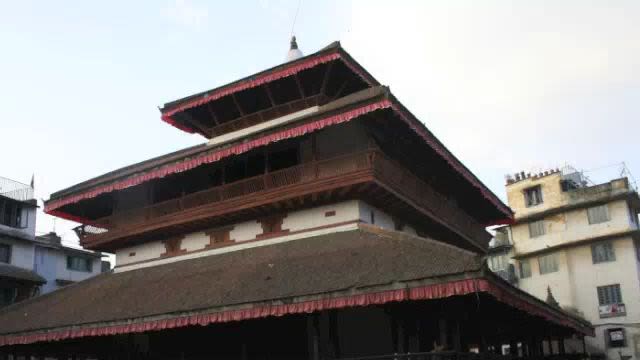
The 2015 Gorkha Earthquake was a humanitarian disaster, devastating large areas of Nepal with substantial loss of life and livelihoods. This natural disaster was also a cultural catastrophe, destroying monuments throughout Nepal, and substantially damaging structures within the Kathmandu Valley UNESCO World Heritage Property.
Of significant historic importance, these beautiful monuments are also key components of Nepal’s fragile economy through tourism, and are central to the daily lives and rituals of local communities. Their social and economic roles led to pressure to rebuild rapidly and US$2.9 billion was pledged by international donors. Although a huge sum, little has been channelled towards understanding why individual monuments collapsed, how they were constructed and adapted over time, and whether their foundations showed evidence of damage – critical themes when considering the challenges of reconstruction within a seismically active region.
Furthermore, the rapid removal of ancient foundations and their replacement with modern materials without recording led to the loss of evidence of Kathmandu’s early history – risking a second cultural catastrophe.
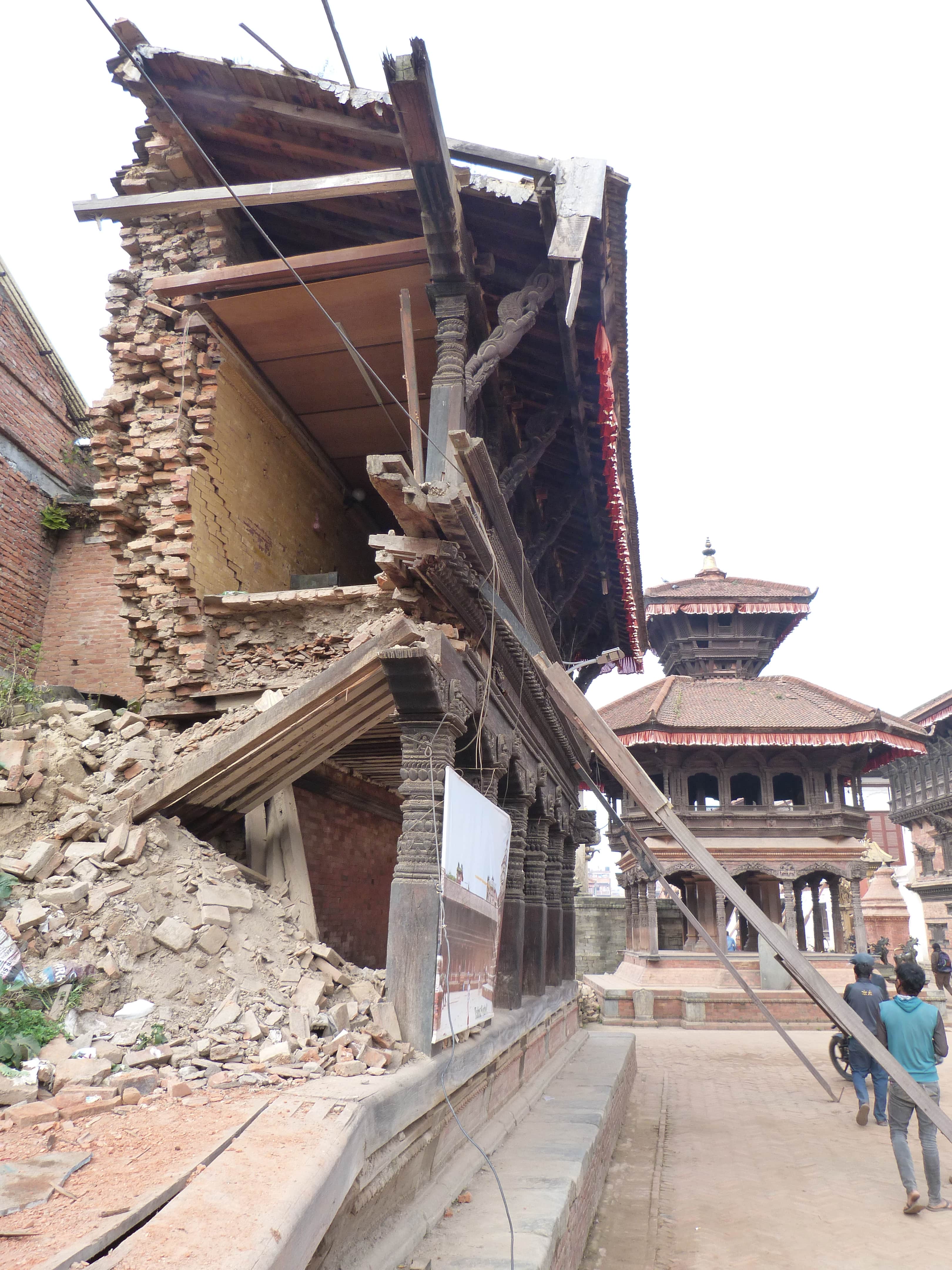
Earthquake damage, Bhaktapur Durbar Square (Durham UNESCO Chair)
Earthquake damage, Bhaktapur Durbar Square (Durham UNESCO Chair)
Resilience within the Rubble highlights the challenges faced during the process of rebuilding World Heritage Sites in post-disaster situations and the tensions raised by the obligation to ensure that the heritage that survived the earthquake is not itself irreversibly damaged.
Focusing on the experience of the Department of Archaeology (Government of Nepal), Durham University UNESCO Chair and University of Stirling in post-earthquake rescue archaeology across Kathmandu since 2015, it explores the contribution that archaeology can make to understanding why individual monuments fell and how they can be rehabilitated with greater resilience but without triggering a second cultural disaster.
This exhibition focuses on the continuing history of one monument - the Kasthamandap - from its origins to its collapse and its reconstruction, with reference to photographic collections and personal testimonies from first responders, heritage professionals, the archaeological team, local communities and stakeholders.
Located in the foothills of the Himalayas, seven monumental zones in the Kathmandu Valley of Nepal were inscribed as a UNESCO World Heritage Property in 1979.
The property includes the palace, or durbar, squares of the old city-states of Kathmandu (Hanuman Dhoka), Patan and Bhaktapur; the Buddhist stupas of Swayambhu and Bauddhanath; and the Hindu temples of Changu Narayan and Pashupatinath, the latter incorporating Kathmandu’s premiere cremation ground.
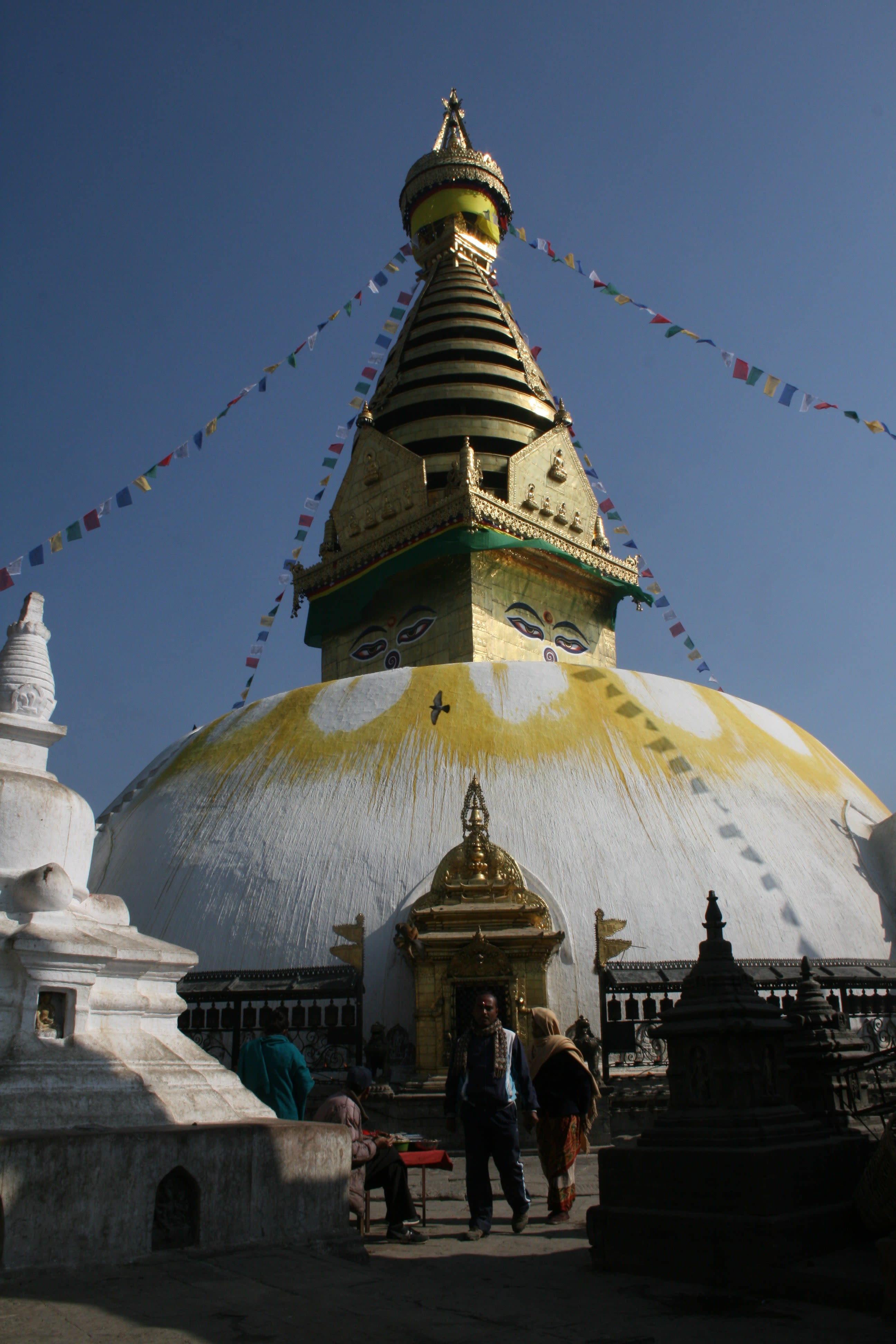
The Buddhist stupa of Swayambhu (Durham UNESCO Chair)
The Buddhist stupa of Swayambhu (Durham UNESCO Chair)
Map of the Kathmandu Valley UNESCO World Heritage Property
Collectively, UNESCO recognised that these monuments were exceptional and unique representations of the architectural and artistic achievements of the inhabitants of the Kathmandu Valley with a continued craft tradition of elaborate wood carving and construction techniques incorporating timber, brick, tile and stone.
Ornate monuments of historic and artistic importance, they are also living monuments of intangible value, representing portals where the heavens touch the earth and where it is possible for ordinary people to reach out and commune with their guiding goddesses and gods. As such, they play a central role in the lives of thousands of local residents.
These sites are also a major part of Nepal’s fragile economy, generating £913 million per year through tourism - 8% of the country’s GDP prior to the 2015 Earthquake.
The 2015 Gorkha Earthquake

The Gorkha Earthquake struck on Saturday 25 April 2015 at 11.56 Nepal Standard Time (6.11am GMT), changing the iconic skyline of Kathmandu within minutes. The 7.8 Magnitude tremor is reported to have led to around 9,000 fatalities. In addition, over 20,000 were reported injured and half a million houses destroyed.
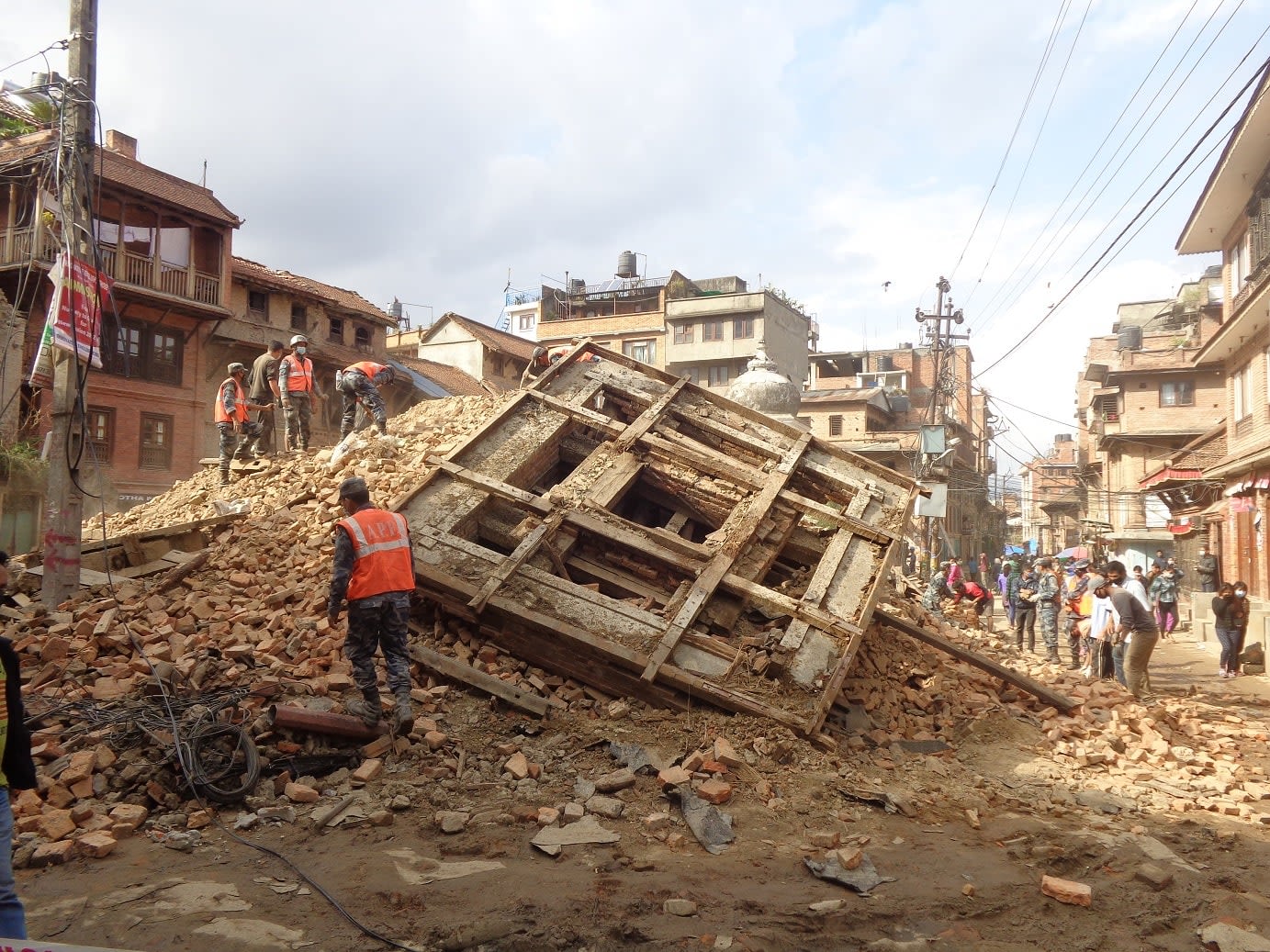
Debris of the Radha Krishna Temple, Patan (Kai Weise)
Debris of the Radha Krishna Temple, Patan (Kai Weise)
Epicentres of the 2015 Gorkha Earthquake
The earthquake, and later aftershocks, also led to the damage of 691 cultural monuments across Nepal, of which 131 collapsed, including many within the Kathmandu Valley UNESCO World Heritage Property. The financial cost of the damage to heritage was estimated at over £129 million.

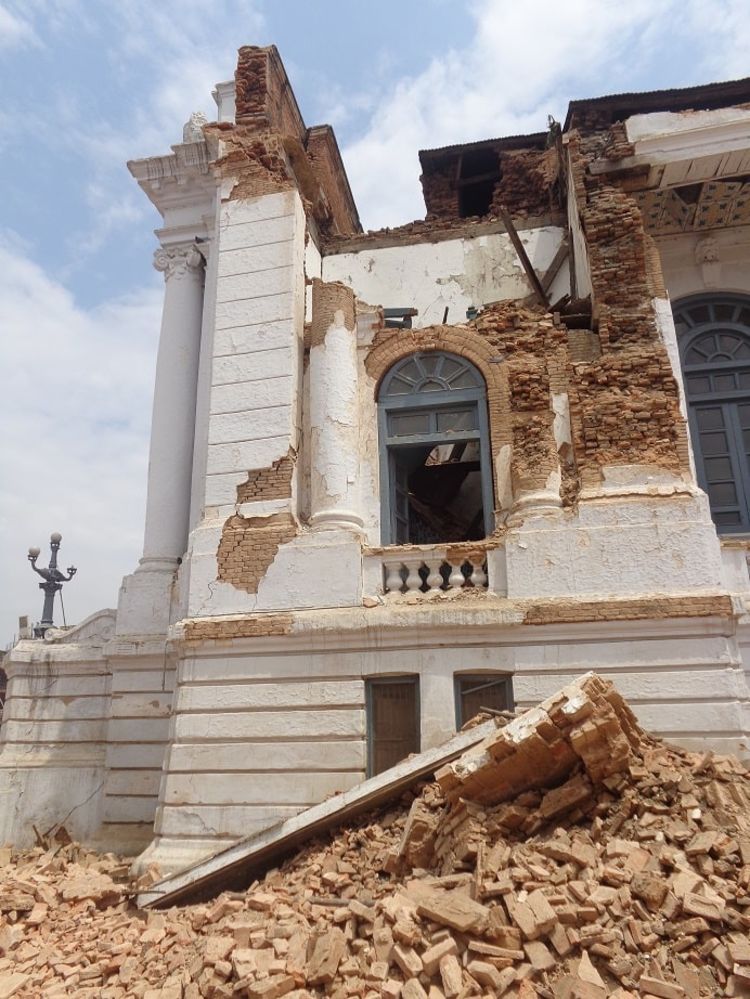
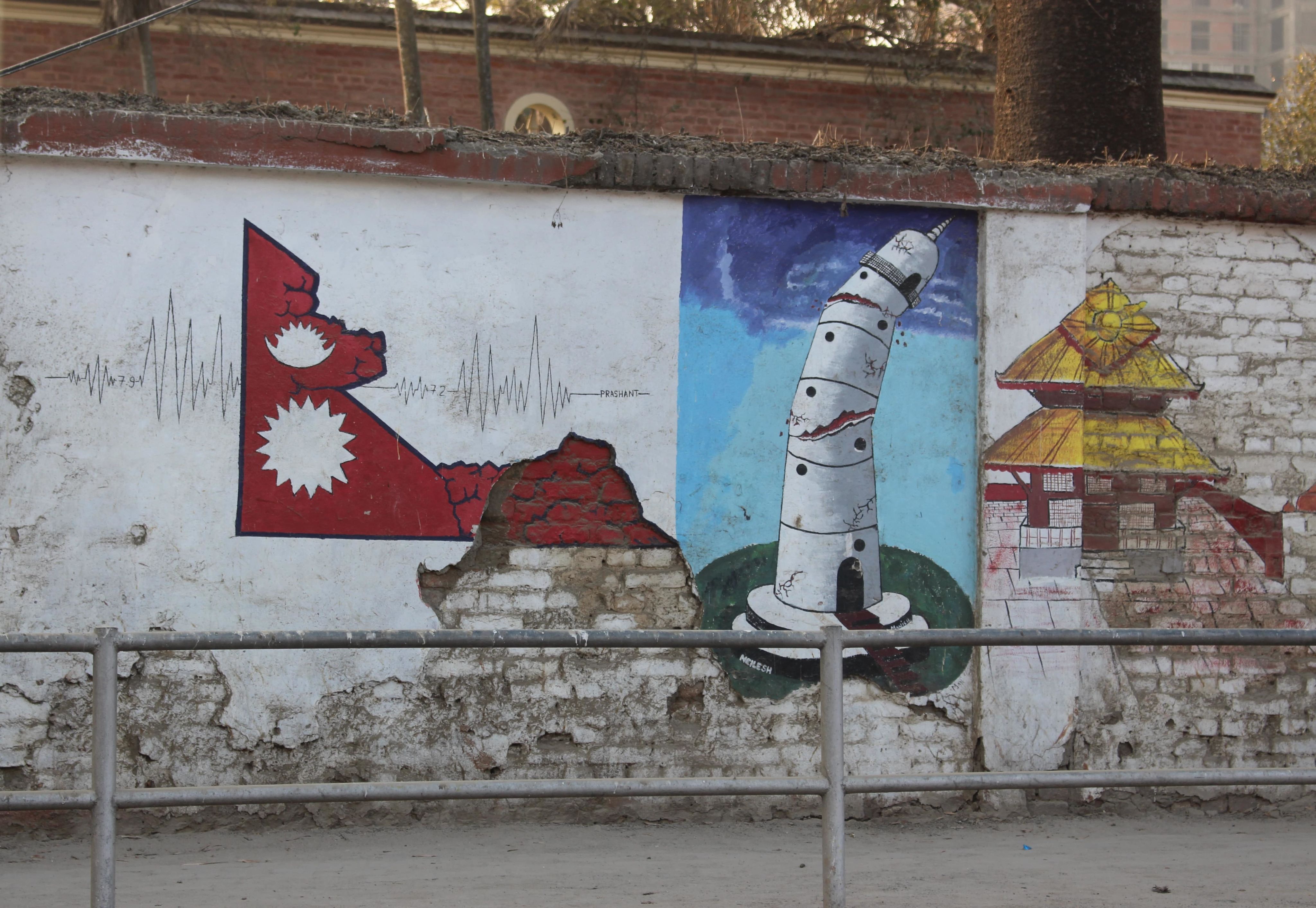
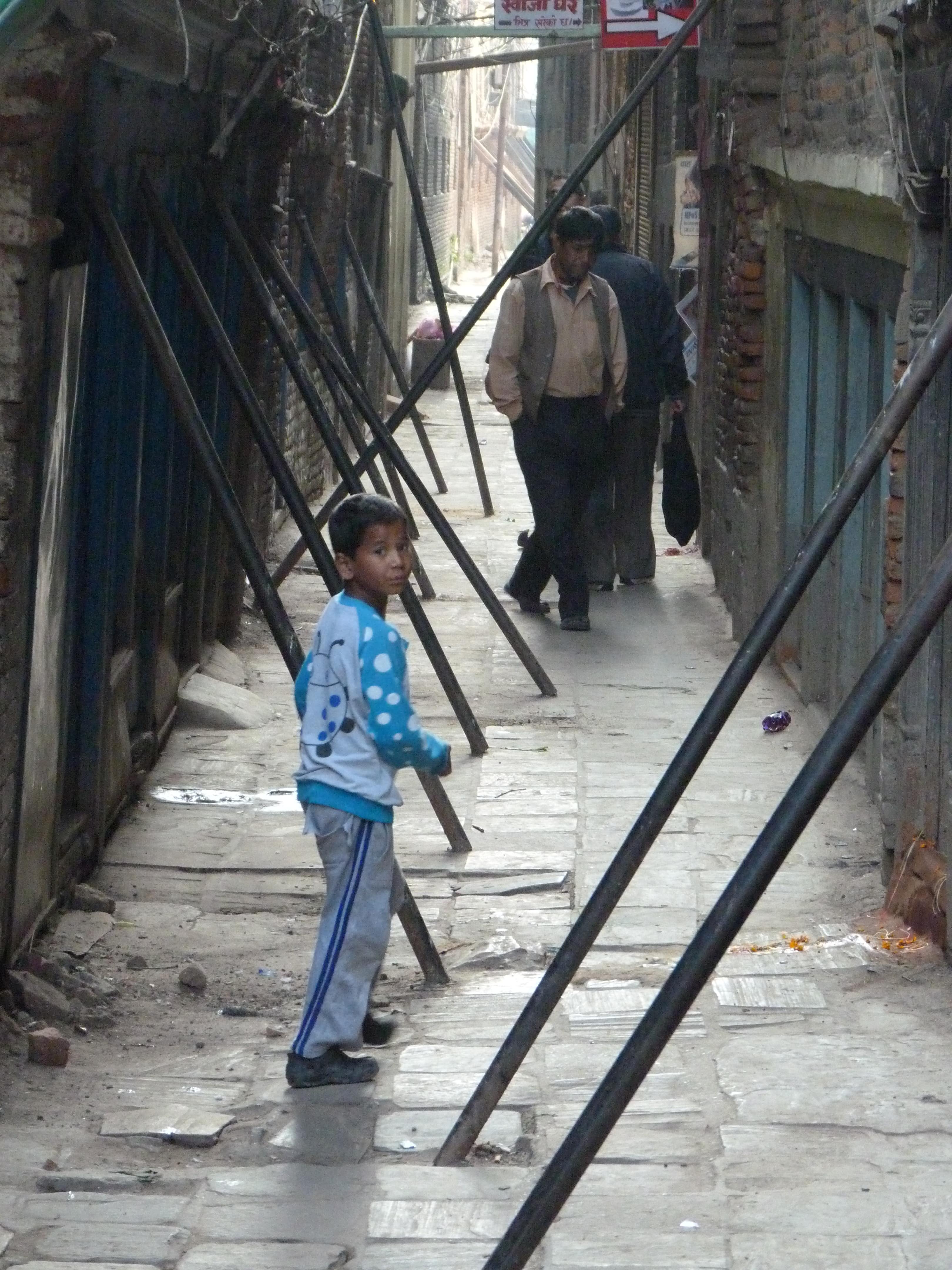
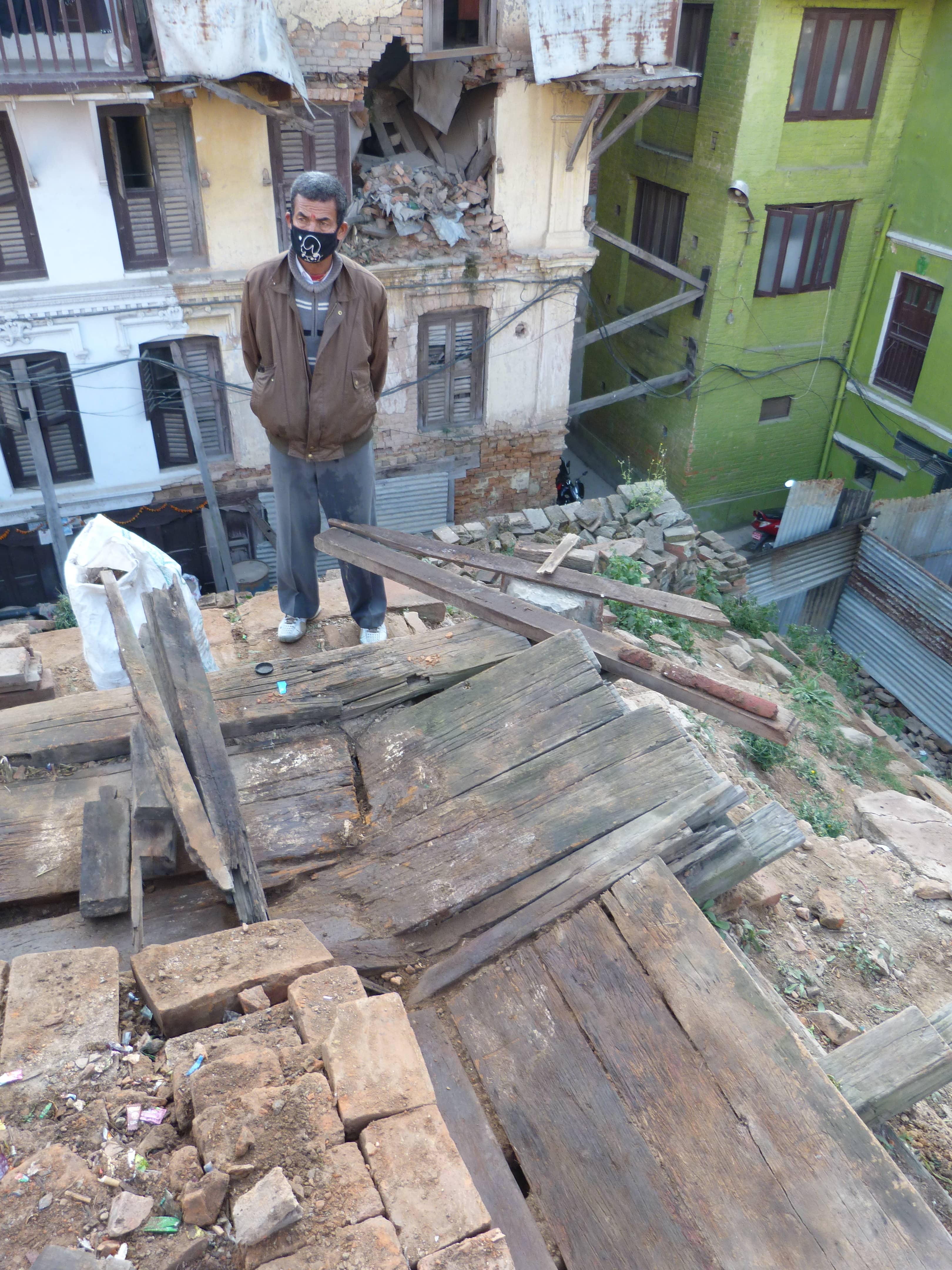
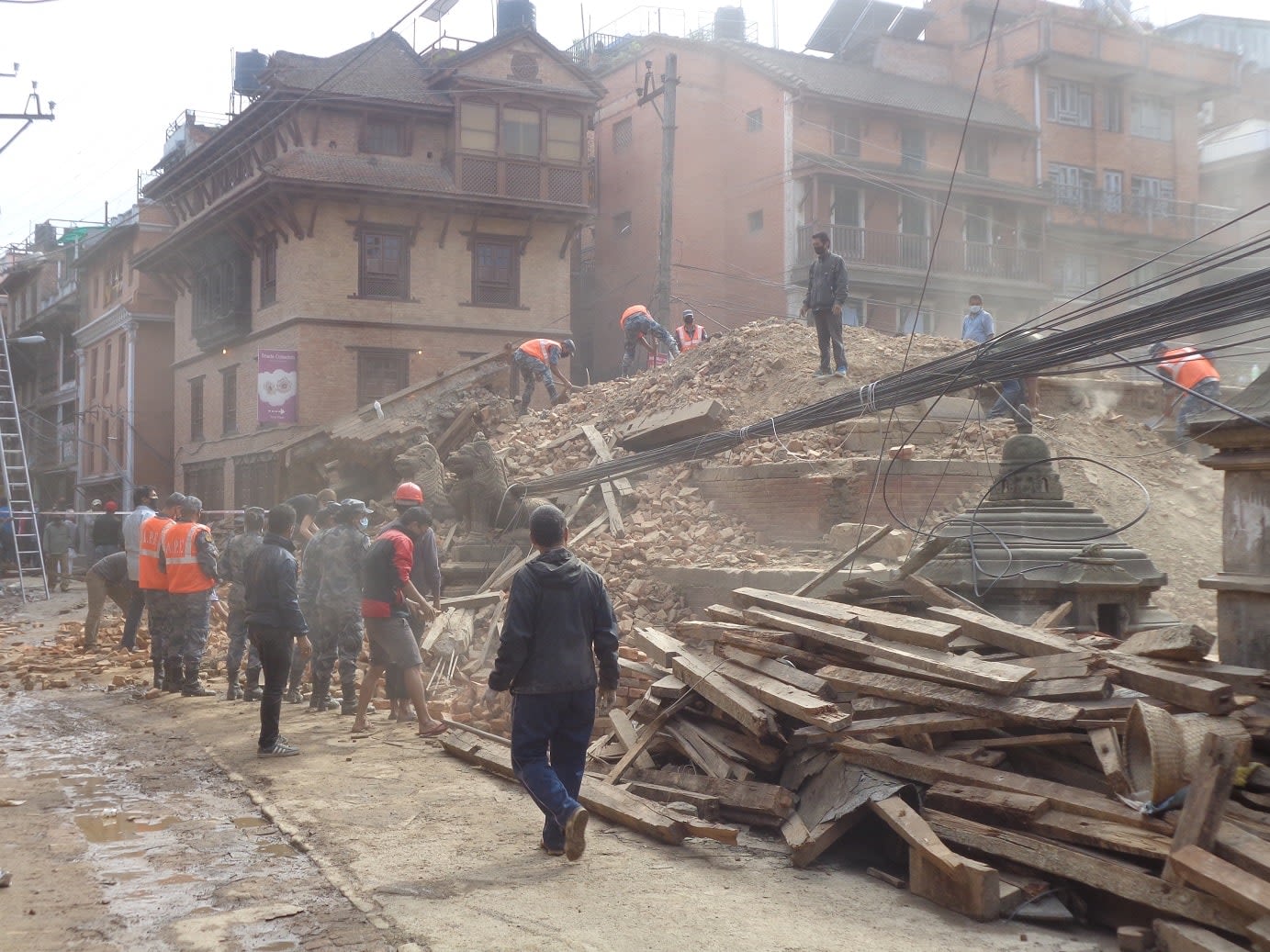

Earthquake damage, Bhaktapur Durbar Square (Durham UNESCO Chair)
Earthquake damage, Bhaktapur Durbar Square (Durham UNESCO Chair)

Earthquake damage at the Royal Palace, Hanuman Dhoka Durbar Square (Kai Weise)
Earthquake damage at the Royal Palace, Hanuman Dhoka Durbar Square (Kai Weise)

Murals of Kathmandu’s lost heritage including Bhimsen’s Tower (Durham UNESCO Chair)
Murals of Kathmandu’s lost heritage including Bhimsen’s Tower (Durham UNESCO Chair)

Temporary supports near Freak street, Kathmandu (Durham UNESCO Chair)
Temporary supports near Freak street, Kathmandu (Durham UNESCO Chair)

Amongst the ruins at Jaisedewal, Hanuman Dhoka (Durham UNESCO Chair)
Amongst the ruins at Jaisedewal, Hanuman Dhoka (Durham UNESCO Chair)

Rubble clearance at the Radha Krishna Temple, Patan (Kai Weise)
Rubble clearance at the Radha Krishna Temple, Patan (Kai Weise)
One of the worst affected parts of the World Heritage Site was Hanuman Dhoka’s Durbar Square, part of one of the medieval urban centres of the Kathmandu Valley.
Here, 39 of the complex’s 97 protected monuments sustained significant damage, with a further 11 collapsing – including the iconic Kasthamandap – the monument from which Kathmandu derives its name.
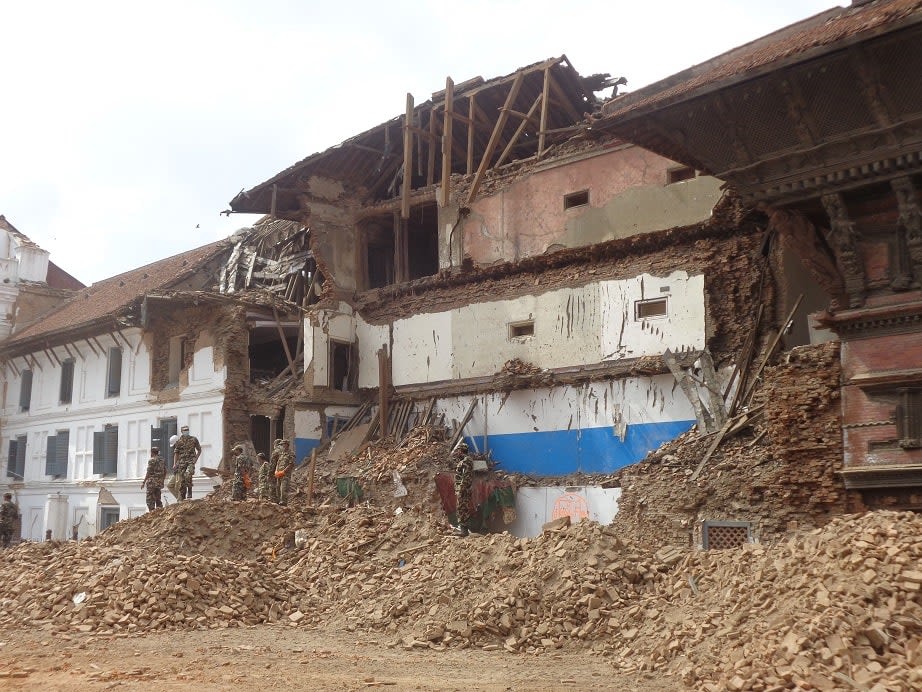
The Kasthamandap
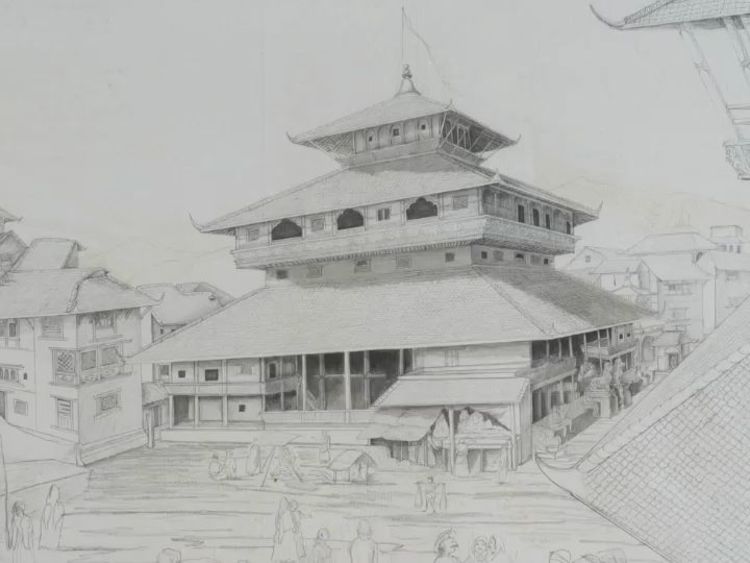
Instantly recognisable, the Kasthamandap was part of the fabric and identity of Kathmandu and wider Nepal, lending its name and profile to a newspaper, airline, television channel, bank and shop logos. Located on an ancient trading route through the Kathmandu Valley, the Kasthamandap was a rest house or Sattal and later housed a Shaivite shrine venerating the Yogi Gorakhnath.
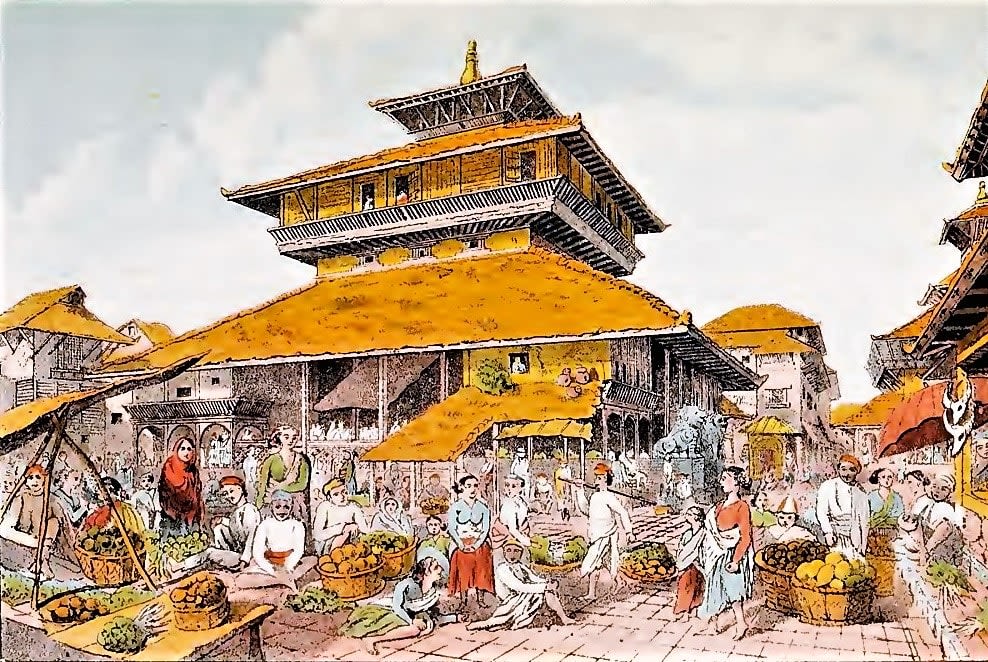
Watercolour of the Kasthamandap by Henry Ambrose Oldfield (Resident in Nepal 1850-1863) (Image Courtesy the late Charles Allen)
Watercolour of the Kasthamandap by Henry Ambrose Oldfield (Resident in Nepal 1850-1863) (Image Courtesy the late Charles Allen)
Considered to be one of the oldest standing monuments in the Kathmandu Valley, textual sources placed its construction in the twelfth century CE, and local traditions record that it was constructed from a single tree. Earlier research at the monument was focused on its architectural and textual history and nothing was known of its physical development or whether earlier phases of construction lay below the current ground surface.
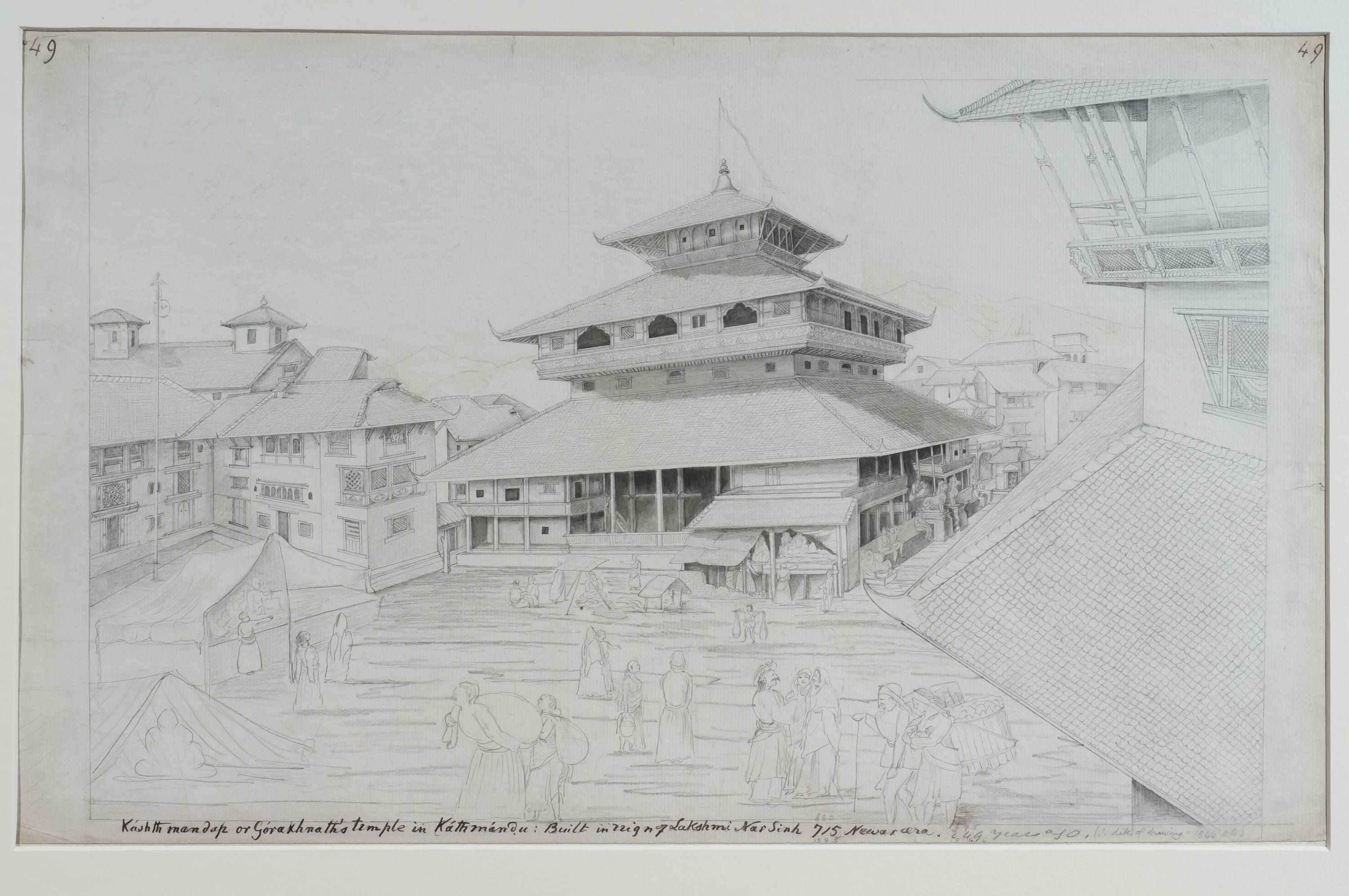
Drawing of the Kasthamandap by Raj Man Singh (1797-1865), collected by Brian Houghton Hodgson (1800-1894)(Image Courtesy of the Royal Asiatic Society, Acquisition Number 022.049)
Drawing of the Kasthamandap by Raj Man Singh (1797-1865), collected by Brian Houghton Hodgson (1800-1894)(Image Courtesy of the Royal Asiatic Society, Acquisition Number 022.049)
With multiple functions, it was believed that the Kasthamandap may originally have performed the role of council hall and coronation pavilion for the city’s royal family but, in the last century, had become the focus of shops and markets within and around the monument.
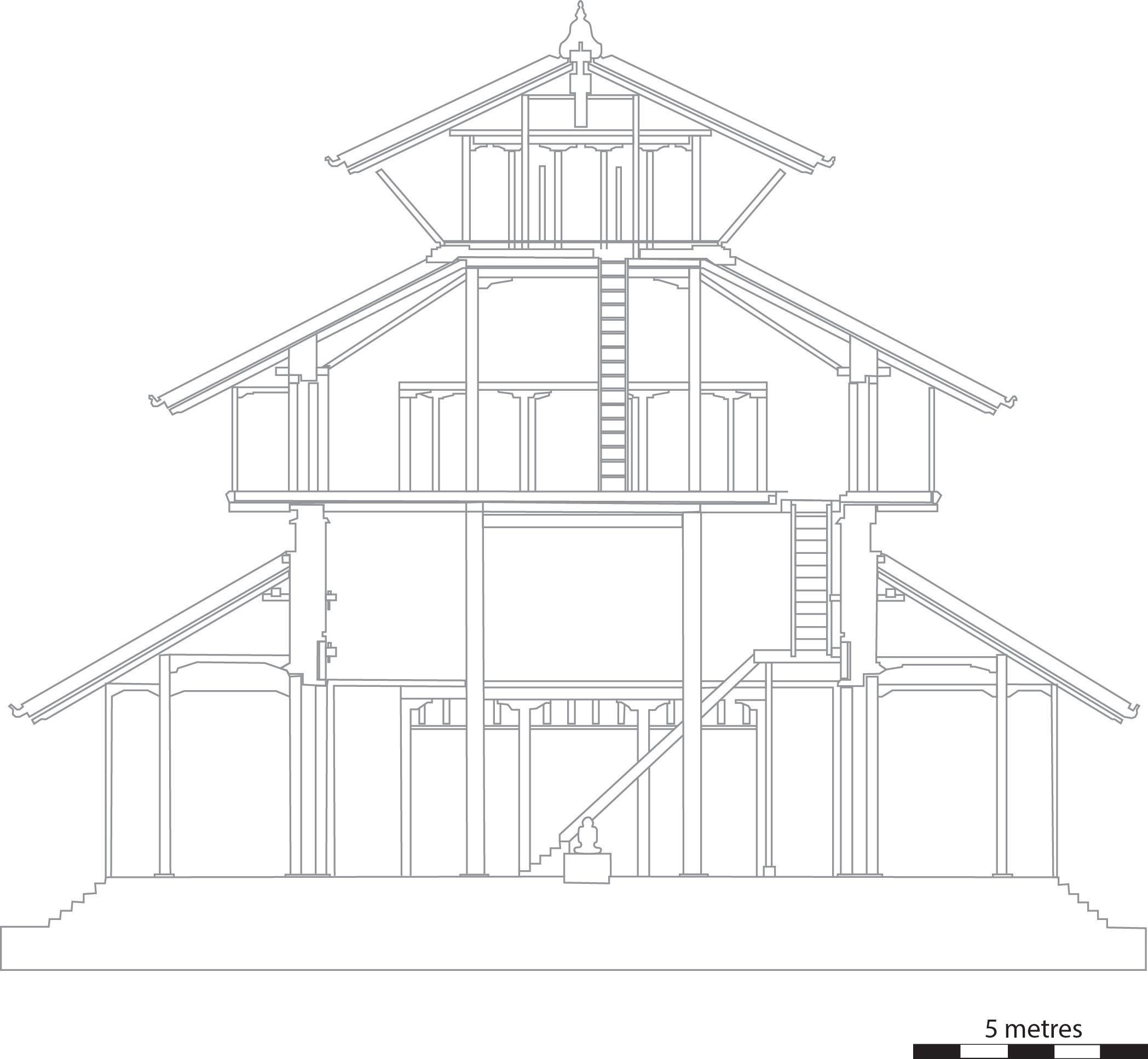
Architectural elevation of the Kasthamandap (Digitised by Mark Manuel, from drawing of Wolfgang Korn)
Architectural elevation of the Kasthamandap (Digitised by Mark Manuel, from drawing of Wolfgang Korn)
Although no one lived within the Kasthamandap in recent years, it was hosting a temporary blood donation clinic on the morning of Saturday 25 April 2015 when the earthquake struck. With over 60 reported fatalities, bulldozers and heavy machinery were quickly mobilised to clear the rubble and recover the injured and dead.
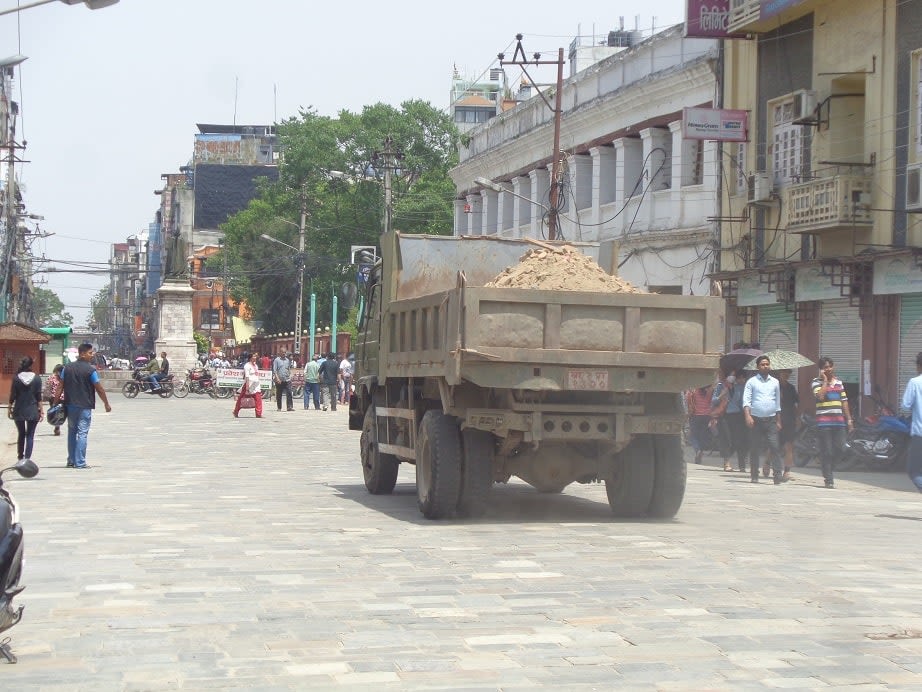
Dumping of historic debris, Hanuman Dhoka Durbar Square (Kai Weise)
Dumping of historic debris, Hanuman Dhoka Durbar Square (Kai Weise)
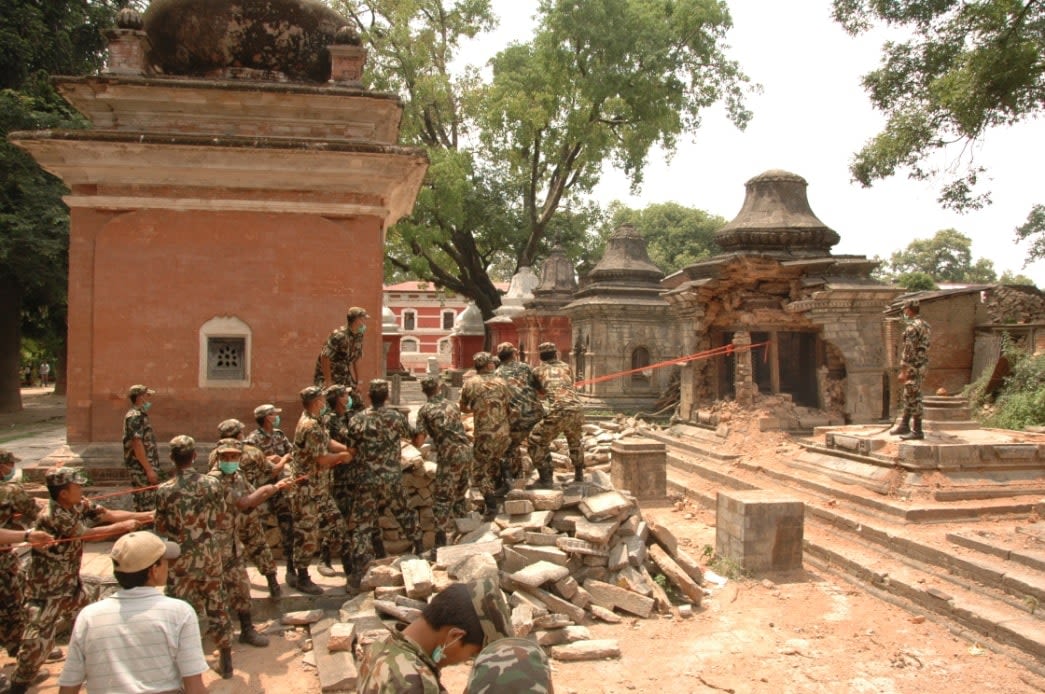
Deliberate collapse of damaged shrines without recording, Pashupati (Image Courtesy of Pashupati Area Development Trust)
Deliberate collapse of damaged shrines without recording, Pashupati (Image Courtesy of Pashupati Area Development Trust)
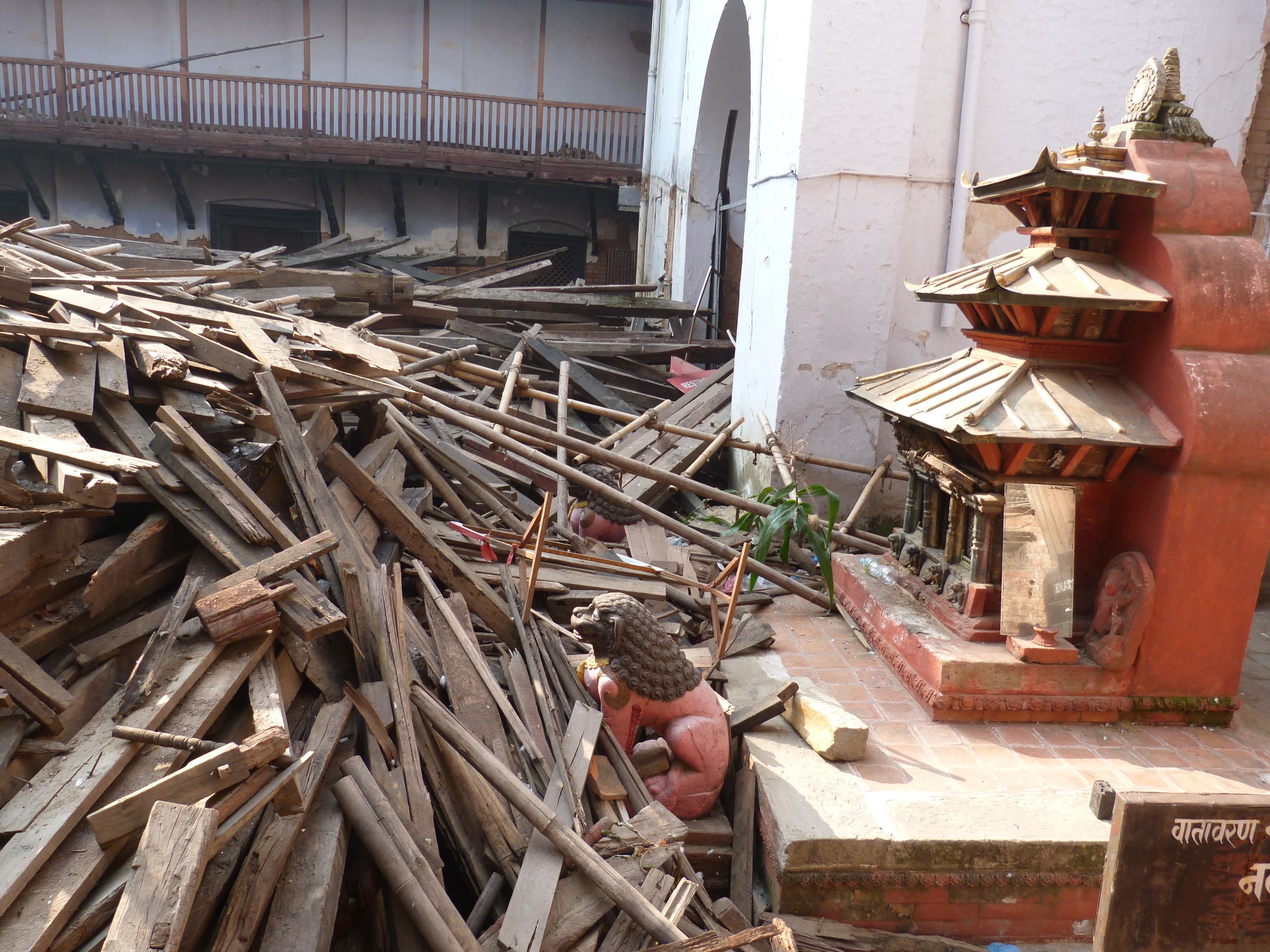
Salvaged timber, Hanuman Dhoka Durbar Square (Durham UNESCO Chair)
Salvaged timber, Hanuman Dhoka Durbar Square (Durham UNESCO Chair)
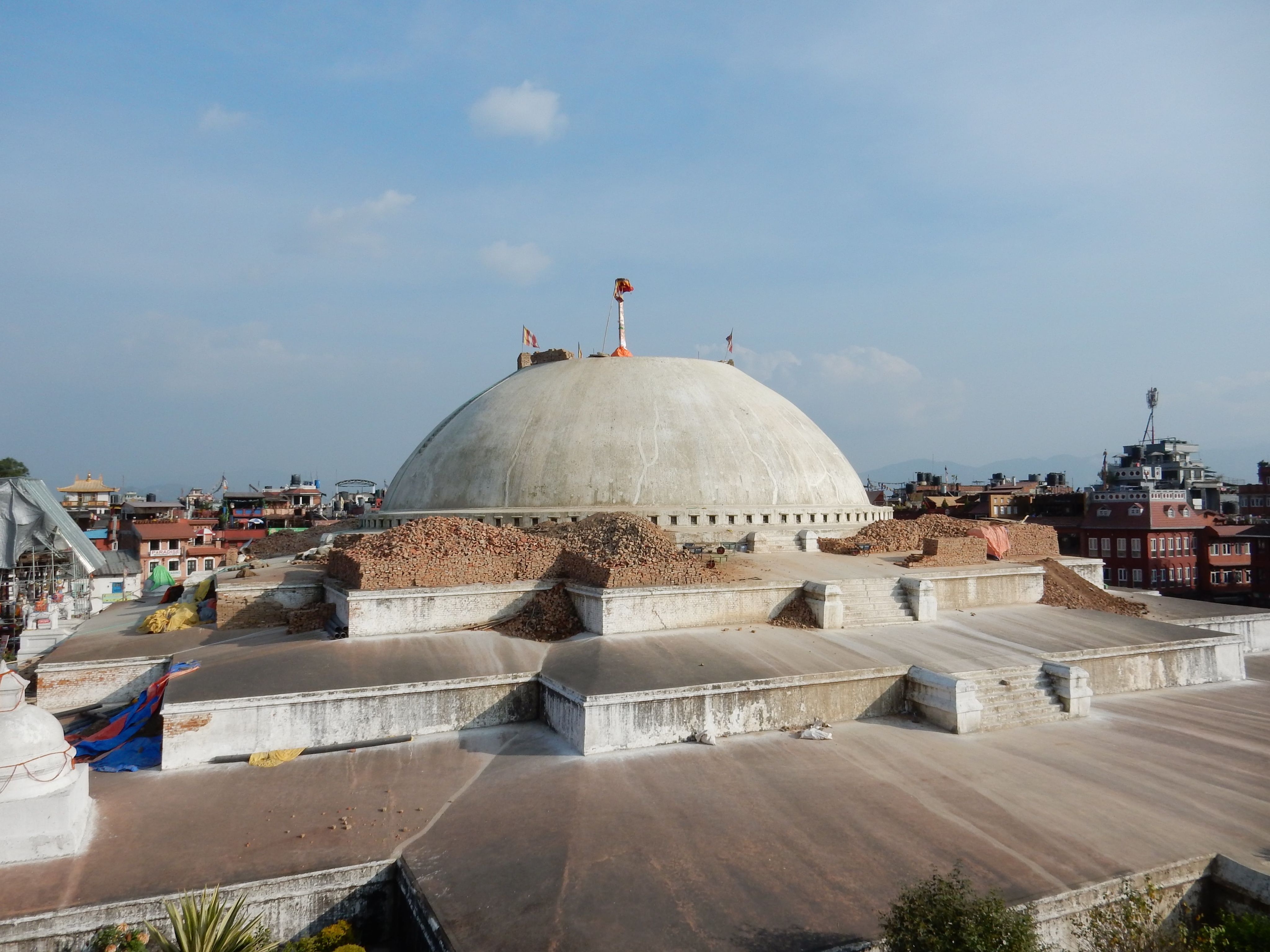
Unrecorded dismantling and reconstruction of Baudhhanath Stupa (Image Courtesy of Mildred Davis)
Unrecorded dismantling and reconstruction of Baudhhanath Stupa (Image Courtesy of Mildred Davis)
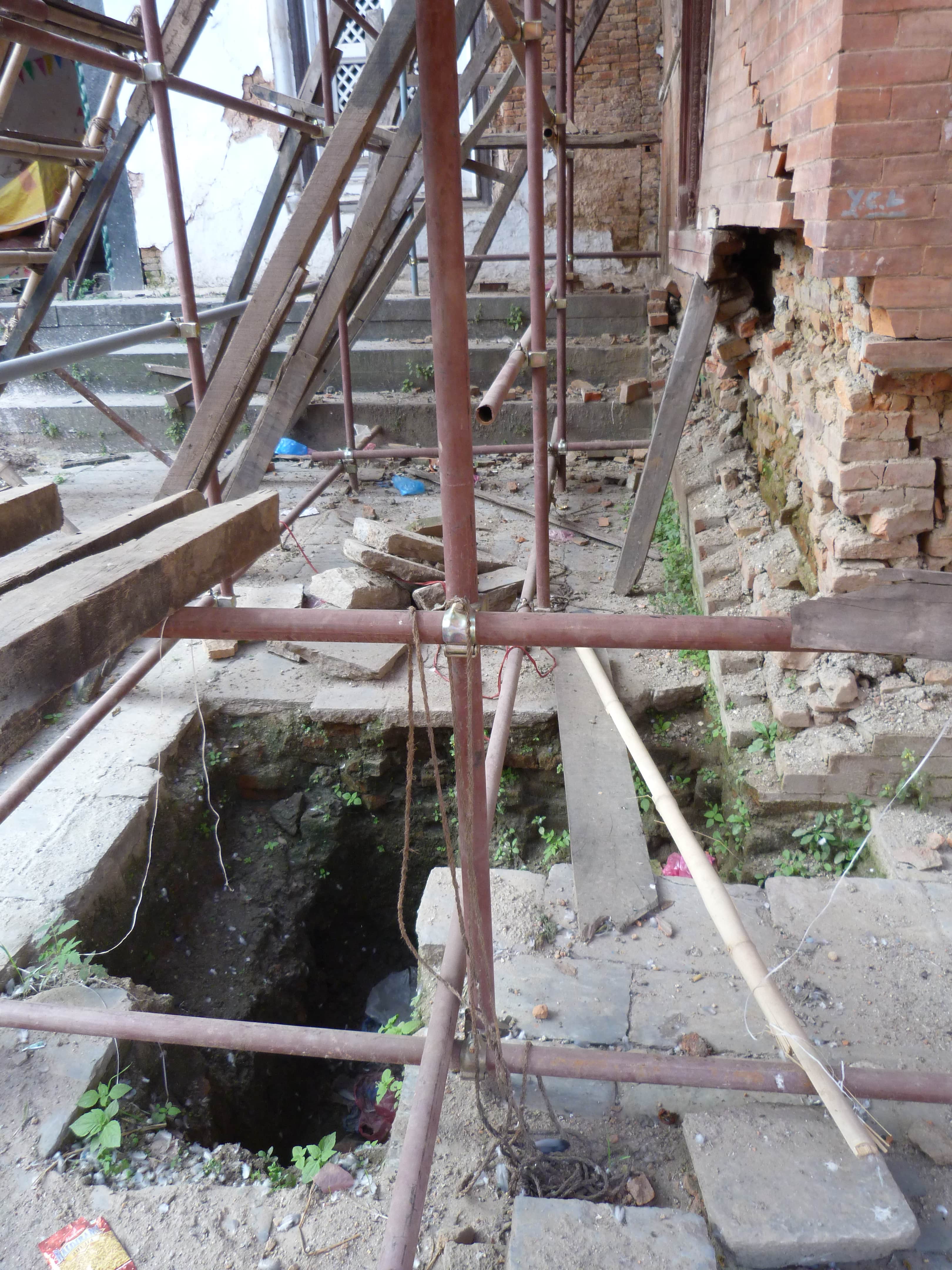
Unrecorded engineering cut into foundations, Royal Palace, Hanuman Dhoka Durbar Square (Durham UNESCO Chair)
Unrecorded engineering cut into foundations, Royal Palace, Hanuman Dhoka Durbar Square (Durham UNESCO Chair)
As the streets were cleared for access, loose brick and tile was removed without recording and many timber and stone architectural and structural elements were lost or mixed with modern material and debris from other monuments.

Dumping of historic debris, Hanuman Dhoka Durbar Square (Kai Weise)
Some badly damaged monuments were also deliberately demolished without recording due to public safety concerns, further destroying sites that had survived the initial earthquake.

Deliberate collapse of damaged shrines without recording, Pashupati (Image Courtesy of Pashupati Area Development Trust)

Salvaged timber, Hanuman Dhoka Durbar Square (Durham UNESCO Chair)
With frequent aftershocks in the days following the earthquake, the monumental ruins became open air camping grounds as residents were too frightened to return home. When they did, their place was taken by engineers and architects who started digging large holes immediately adjacent to, or within, monuments to inspect foundations in advance of reconstruction. Unfortunately, the material they removed was not recorded and their observations were not reported.

Unrecorded dismantling and reconstruction of Baudhhanath Stupa (Image Courtesy of Mildred Davis)

Unrecorded engineering cut into foundations, Royal Palace, Hanuman Dhoka Durbar Square (Durham UNESCO Chair)
It soon became clear that these activities were destroying earlier archaeological sequences and were contributing to a second cultural catastrophe - the loss of Kathmandu’s early history.
An Icon for Rebuilding a Nation
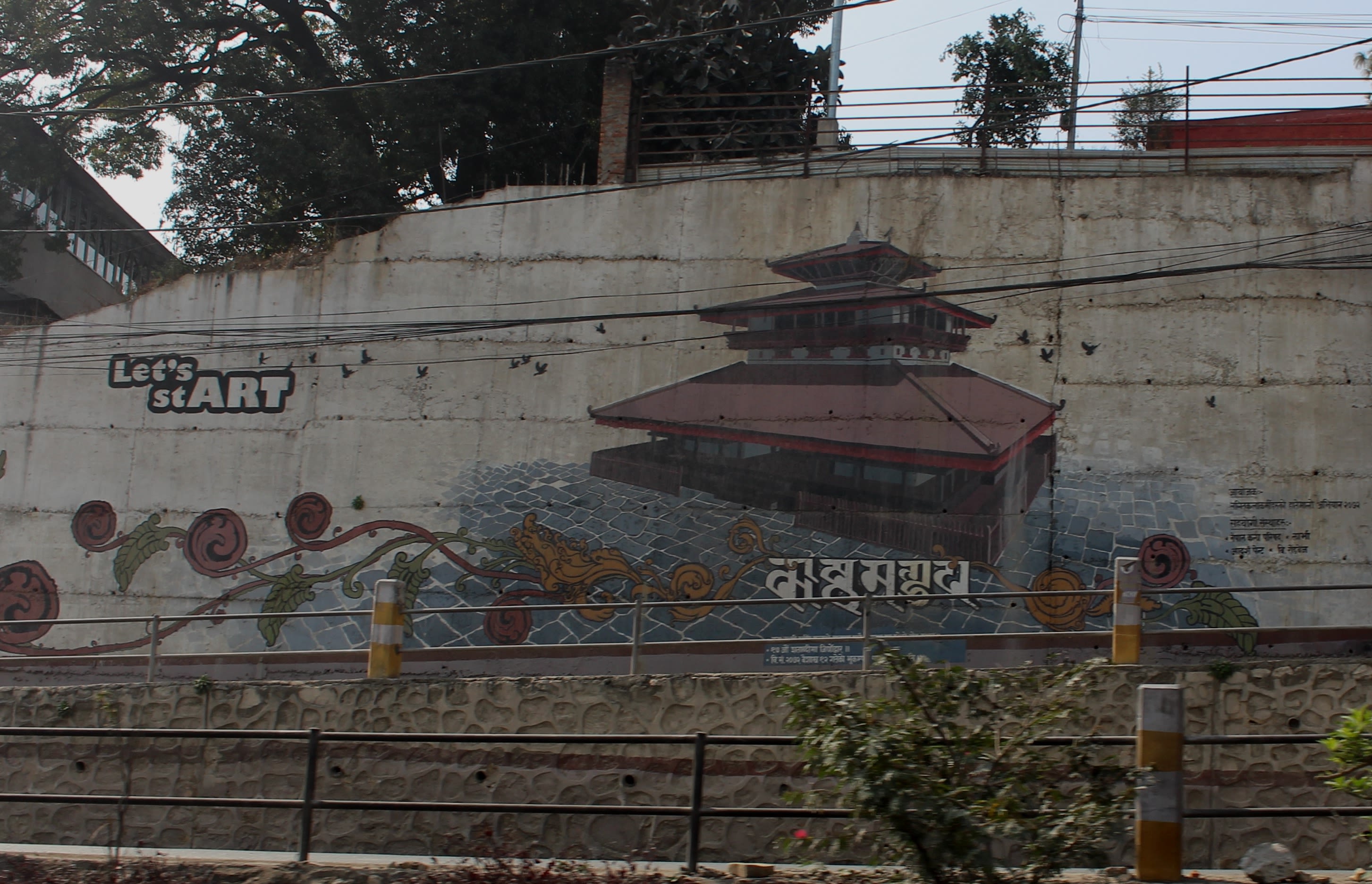
The Kasthamandap soon became a focus for community resilience and collective memory. Moreover, it became a symbolic icon in the face of demands for the rapid rebuilding of a nation.
While the earthquake destroyed so much in a few moments, it began to be recognised that reconstruction could be equally catastrophic if the rush to rebuild led to the loss of unknown stories of these monuments, which could aid their rehabilitation and resilience.
However, the six-year timeline of reconstruction outlined by the Government of Nepal created an urgent need to assess monuments before valuable historic and structural information was destroyed and lost forever within this process.
Most of the knowledge about the Kasthamandap, and about the majority of monuments in Kathmandu before the 2015 Earthquake, had been gathered from historic texts and legends. Their physical study was restricted to standing architecture with little understanding of foundations and earlier phases of development.
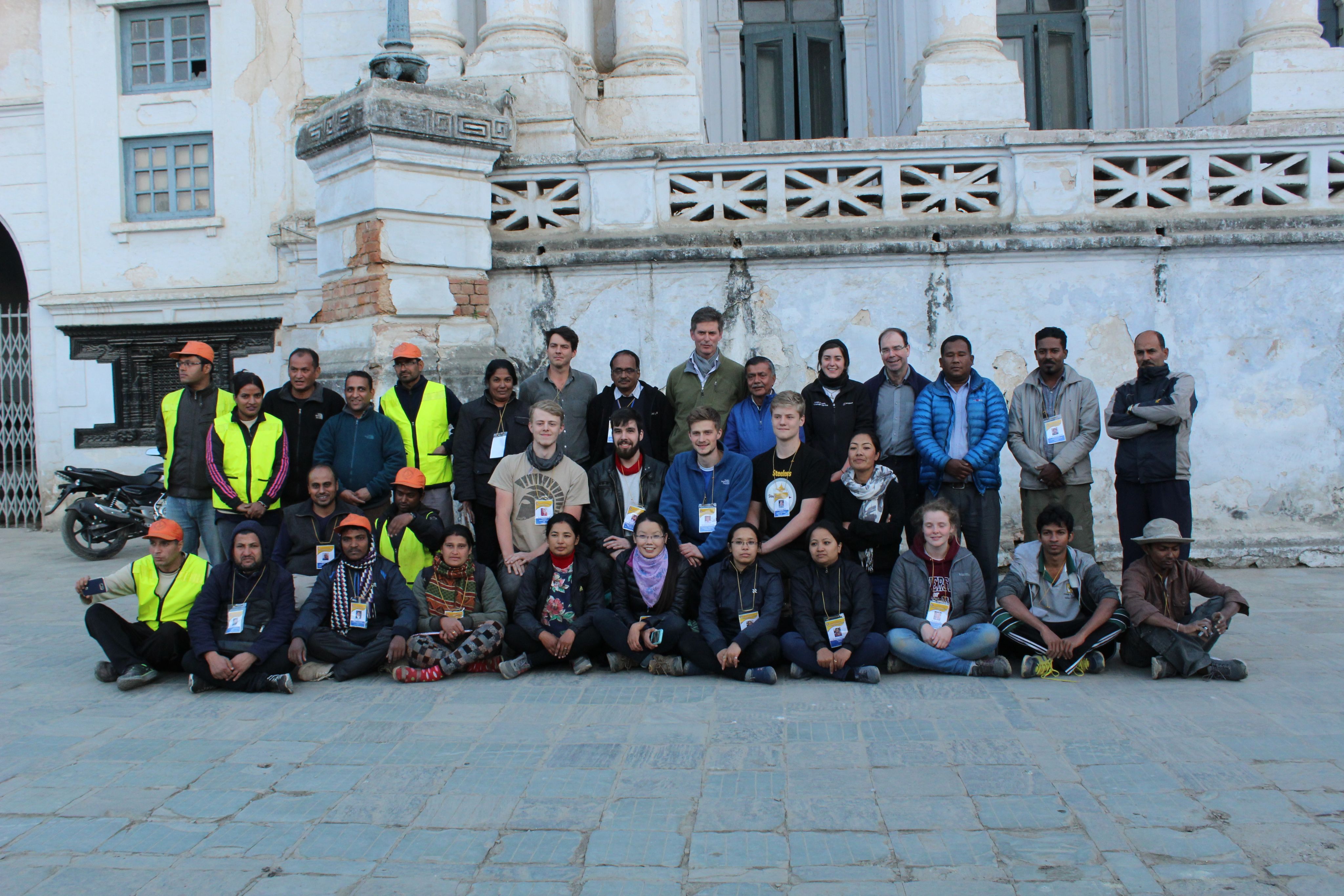
Post-Disaster archaeological team in 2016 (Durham UNESCO Chair)
Post-Disaster archaeological team in 2016 (Durham UNESCO Chair)
Before considering the best way to reconstruct the Kasthamandap, however, there was first a need to look down, not up.
To begin to provide answers to this challenge, Durham’s UNESCO Chair, alongside the Department of Archaeology (Government of Nepal), ICOMOS (Nepal) and the University of Stirling, have undertaken rescue excavations at damaged and destroyed monuments across the Kathmandu Valley UNESCO World Heritage Property, including the Kasthamandap.
Look Down, Not Up:
The Archaeological Response
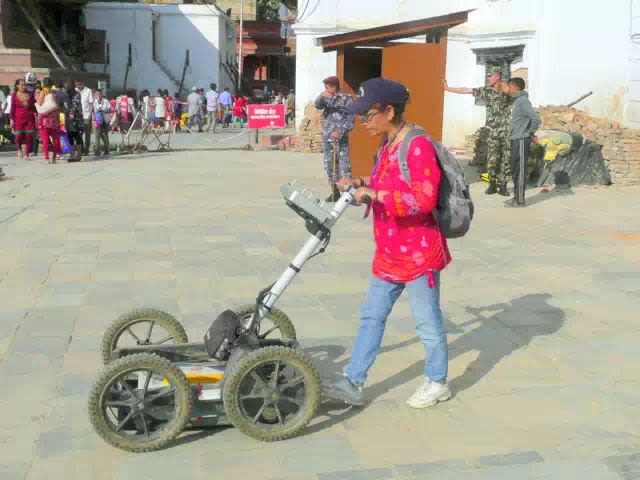
Whilst previous studies of the monuments of Kathmandu restricted themselves to recording standing architecture, our rescue investigations looked below the ground in order to understand the condition of the foundations of collapsed monuments, detect why individual buildings had collapsed, and record and understand their histories of development and adaptation to their seismic environment.
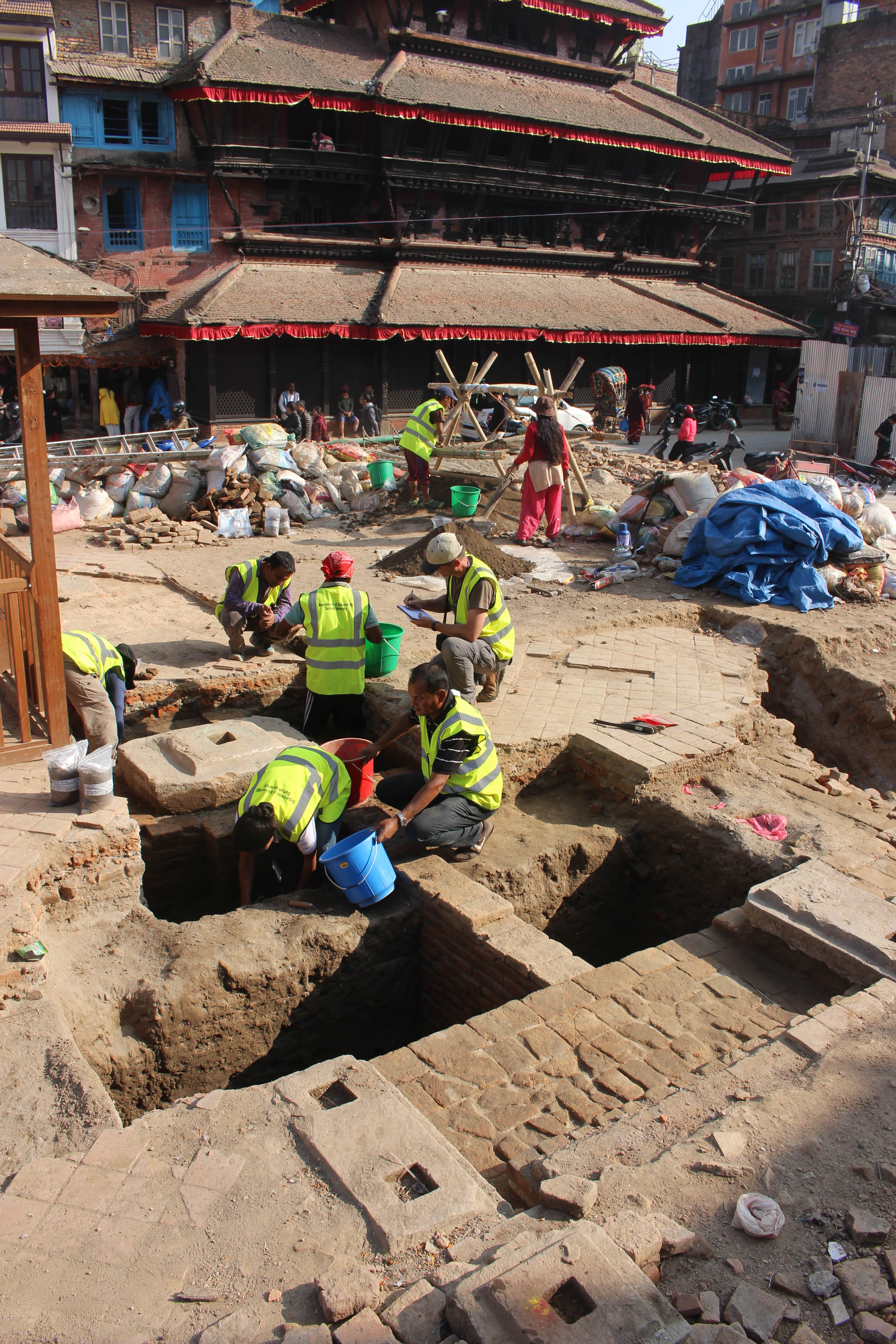
Rescue excavation at the Kasthamandap (Durham UNESCO Chair)
Rescue excavation at the Kasthamandap (Durham UNESCO Chair)
It was hoped that the archaeology exposed would provide evidence of earlier development. In addition, samples of the soil extracted could be studied by geoarchaeologists in order to extract dating evidence and identify environmental
sequences.
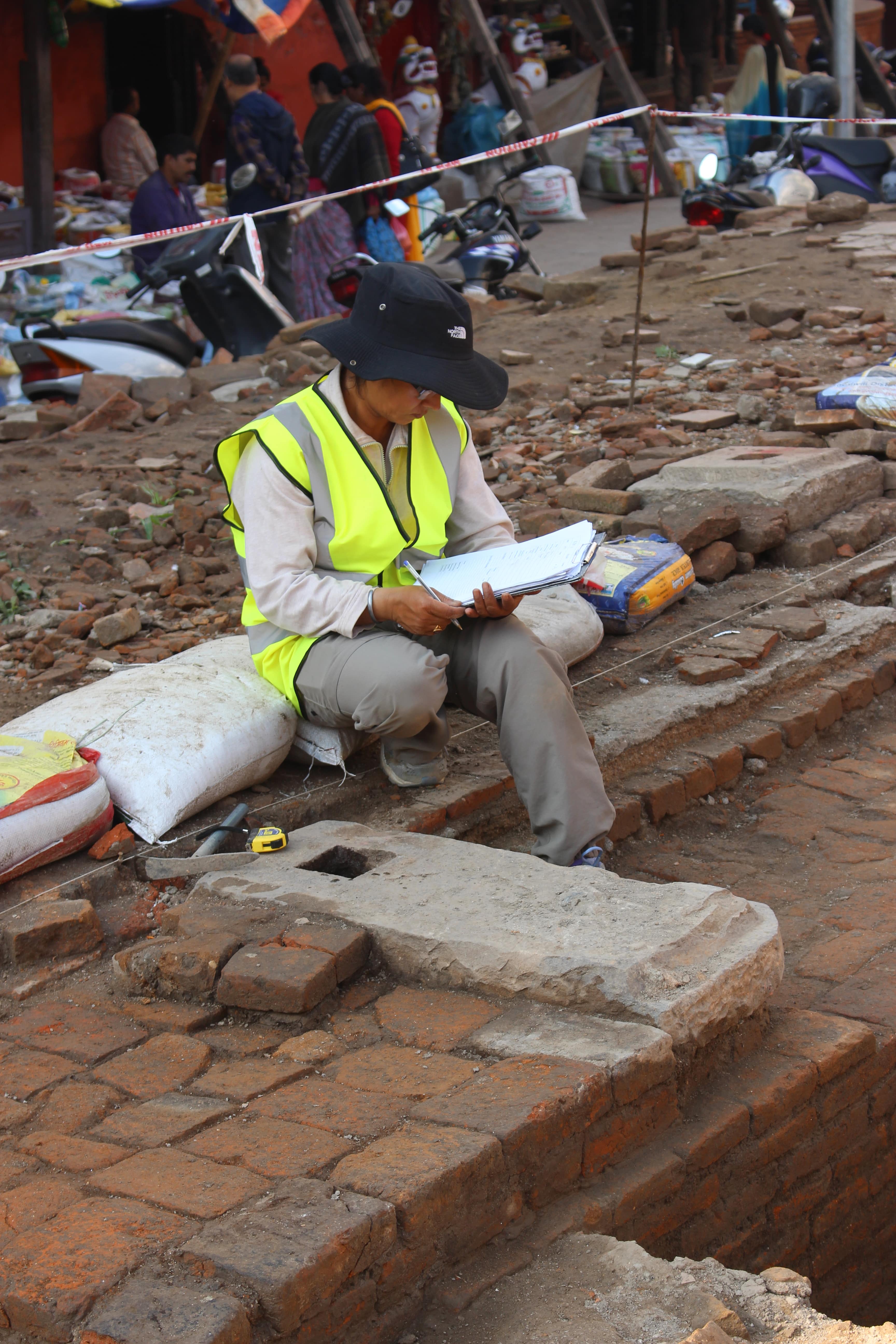
Recording the Kasthamandap (Durham UNESCO Chair)
Recording the Kasthamandap (Durham UNESCO Chair)
The multidisciplinary team used various methods ranging from Ground Penetrating Radar Survey, excavation and geoarchaeology. Excavations were targeted at collapsed monuments, like the Kasthamandap, in order both to look at the strength of foundations and to understand why these structures may have fallen in the earthquake.
Our research has successfully provided invaluable new information on the early history of the Kathmandu Valley as well as insights for engineers and architects tasked with reconstruction.
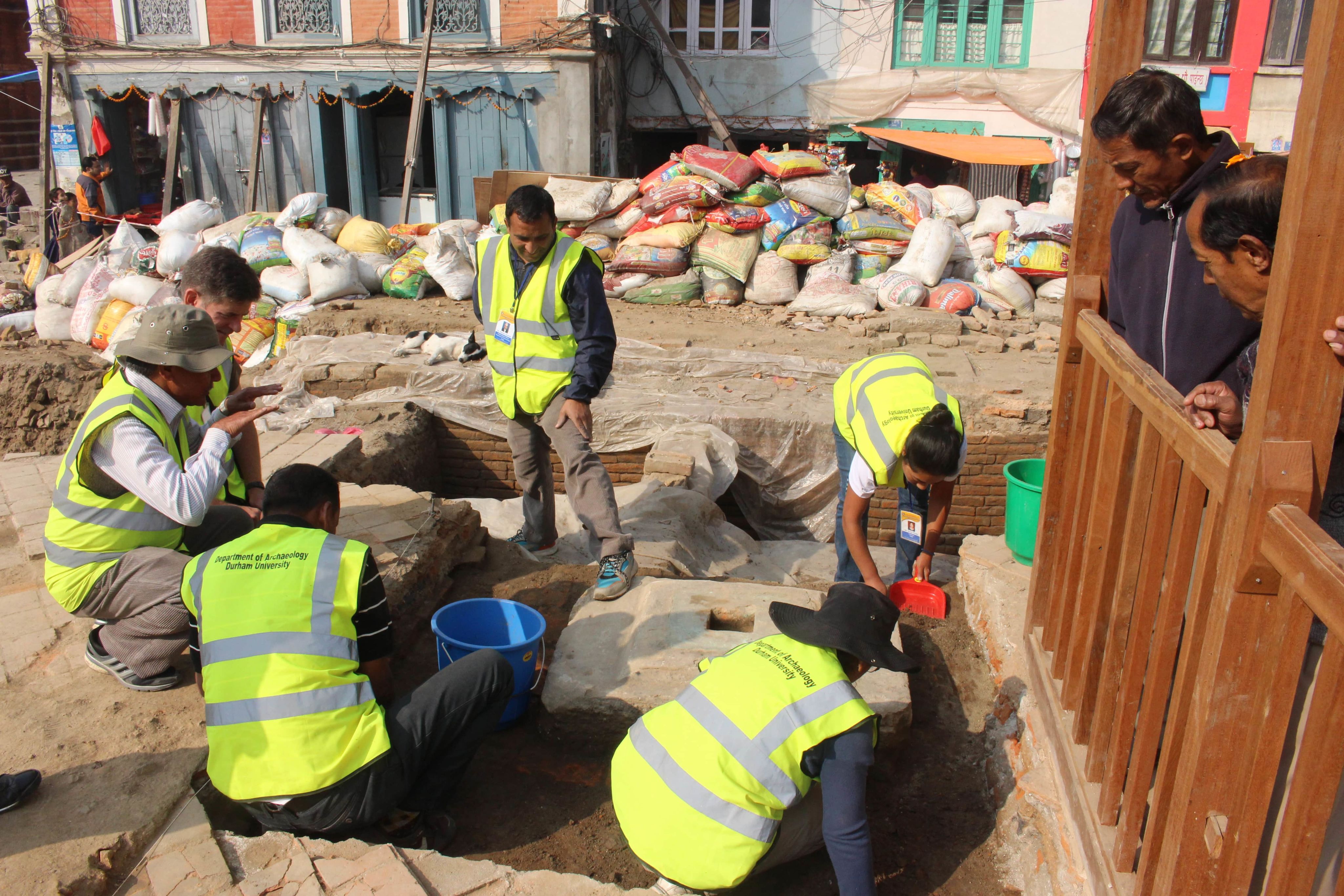
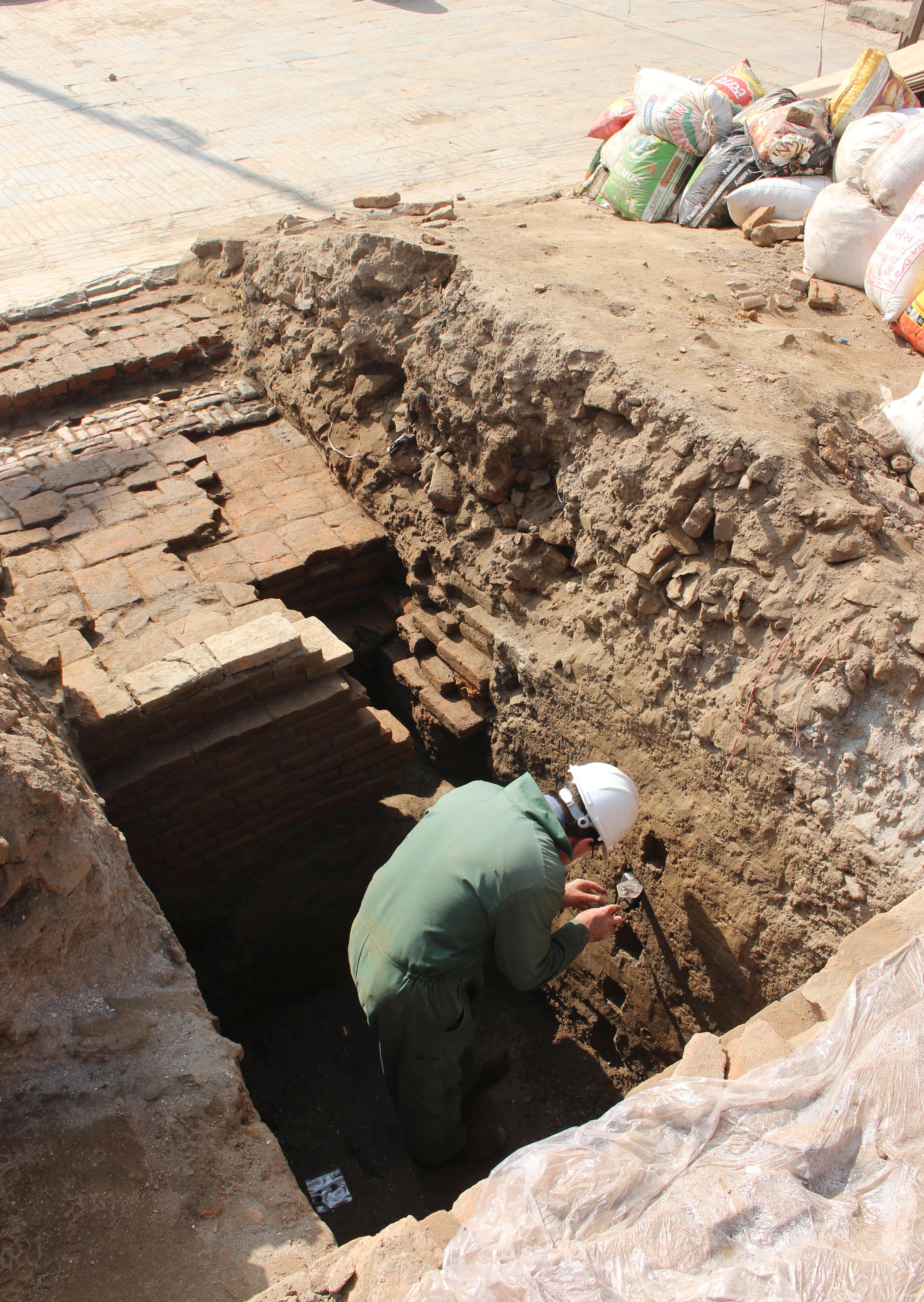
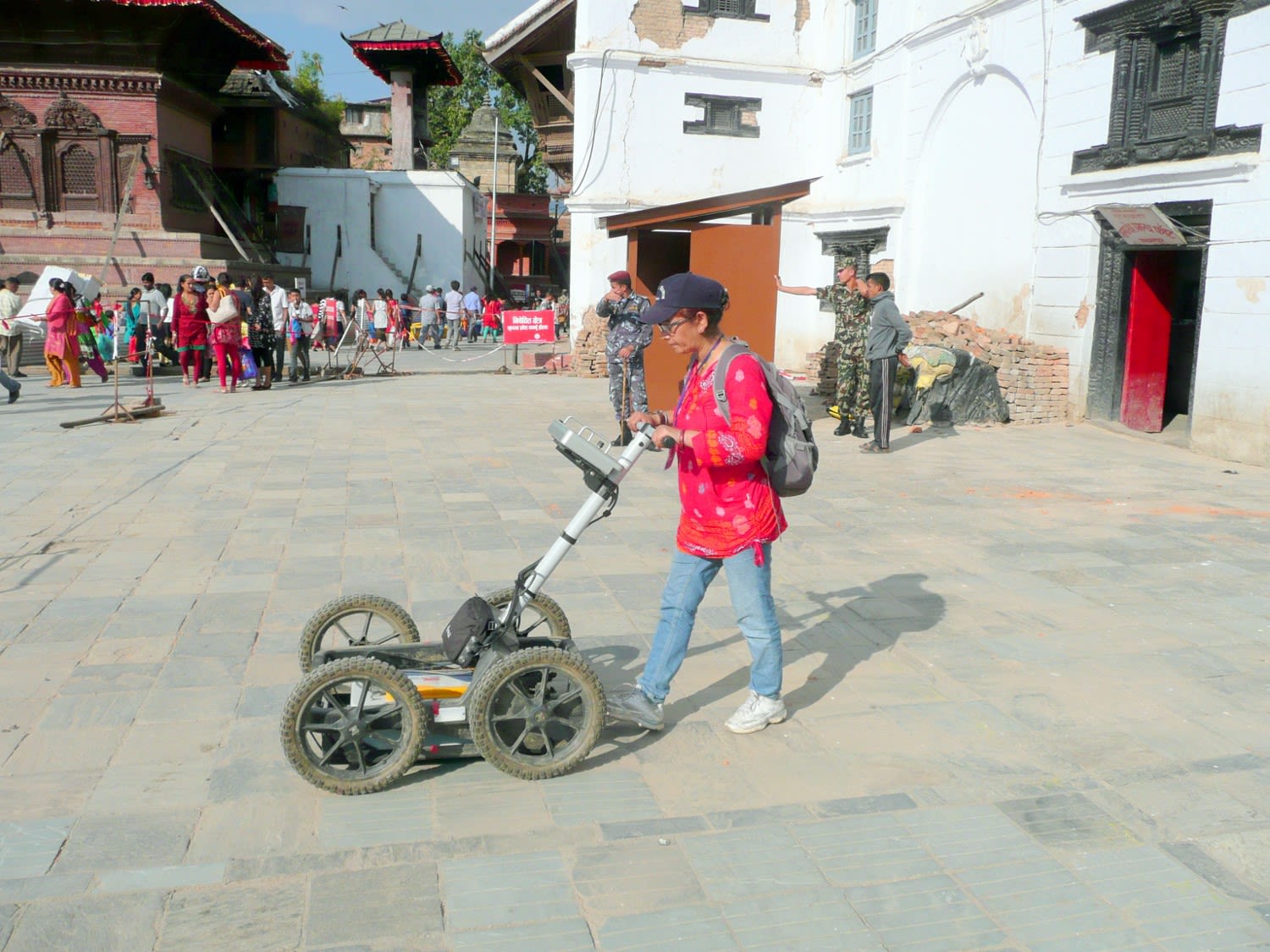
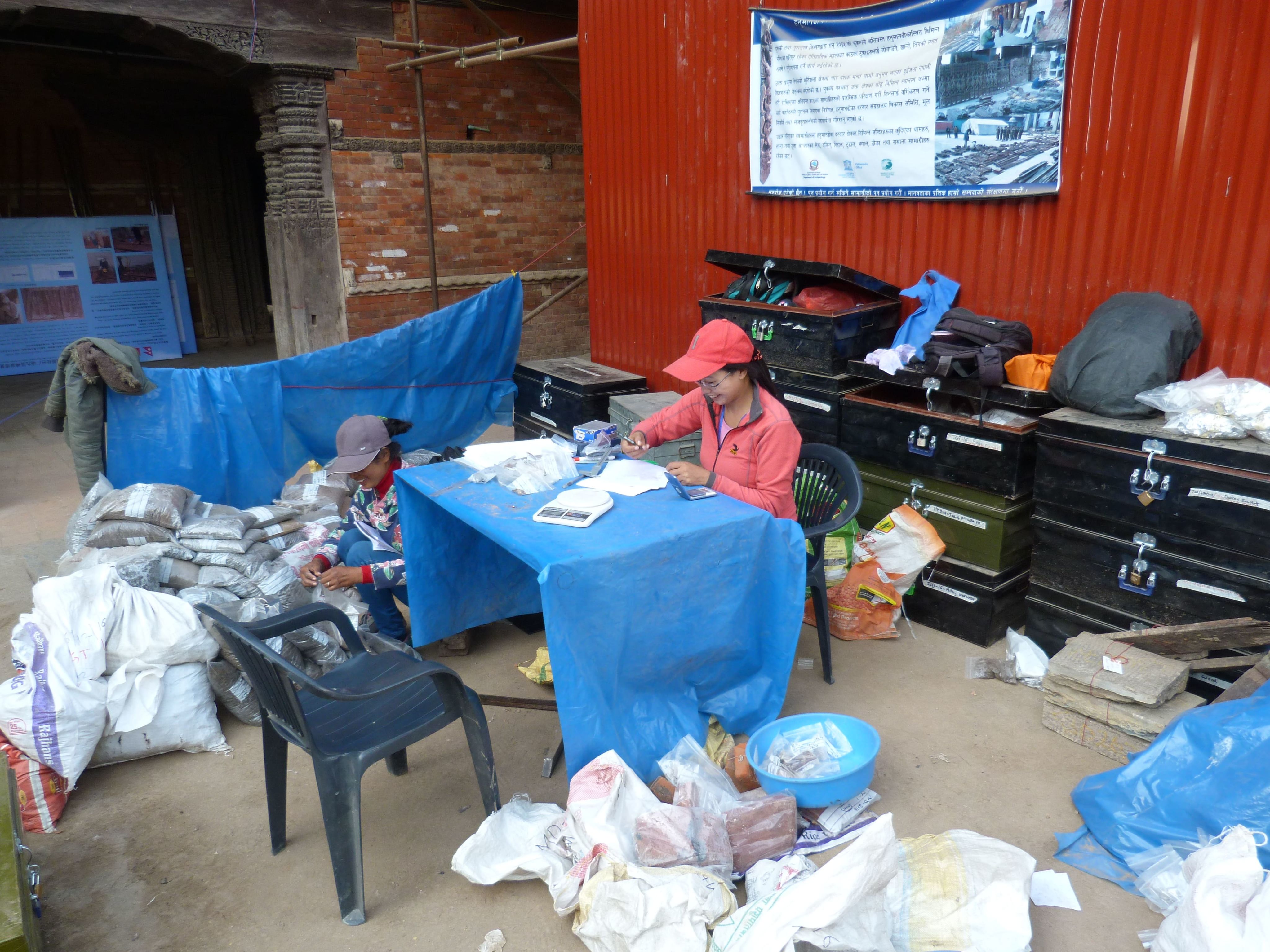

Rescue excavation at the Kasthamandap (Durham UNESCO Chair)
Rescue excavation at the Kasthamandap (Durham UNESCO Chair)

Extracting soil samples at the Kasthamandap (Durham UNESCO Chair)
Extracting soil samples at the Kasthamandap (Durham UNESCO Chair)

Ground Penetrating Radar Survey in Hanuman Dhoka Durbar Square (Durham UNESCO Chair)
Ground Penetrating Radar Survey in Hanuman Dhoka Durbar Square (Durham UNESCO Chair)

Processing artefacts from the Kasthamandap (Durham UNESCO Chair)
Processing artefacts from the Kasthamandap (Durham UNESCO Chair)

